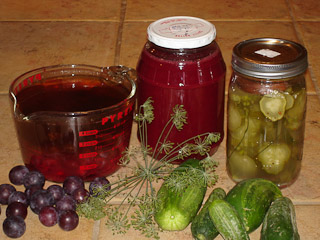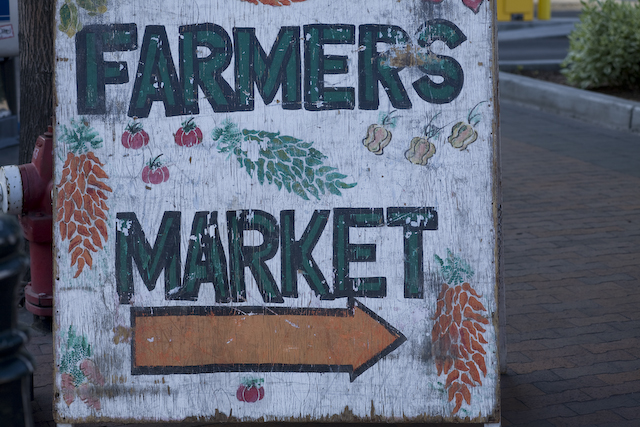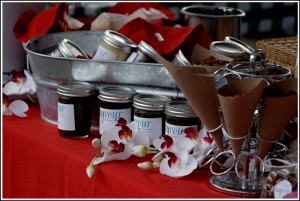Photo by Manon Gaudreau: Plum vinegar, plum sauce, cucumbers in brine
Before refrigeration became widespread, home fermentation was used to preserve dairy as cheese, vegetables as sauerkraut and pickles, fruits as chutneys, ketchup, vinegars and wines, grains as bread, beer and liquor. Fermentation is a process where sugars are converted into lactic acid, alcohol and vinegar, which prevent spoilage. The lacto-fermentation process increases the acidity of food, which inhibits common pathogens. But the acidity level is lower than that of food preserved in vinegar, making it more enjoyable to eat. Inoculating the foods to be preserved with sea salt and homemade whey stimulates the fermentation.
Fermentation enhances digestibility of food, provides natural enzymes as well as a wide range of natural pro-biotics (beneficial bacteria for the intestines).
Home fermented preserves are easy to make. You can do it in small batches, as it does not require sterilization. To the contrary, sterility works against the development of the wild beneficial bacteria present in the air and on the surface of kitchen containers and tools. Jars and utensils only need to be washed in warm soapy water.
In one hour, I can start 3 different kind of preserves. When the ingredients are in season, I make pickled cucumbers, pickled beets, fermented beet juice, ketchup and chutneys, sauerkraut, kimchi (with cabbage, carrots and onions), grape cooler, apple cider, apple cider vinegar. My sources of recipes are 3 inspiring cookbooks: Nourishing Traditions by Sally Fallon, Wild Fermentation by Sandor Ellix Katz and its associated website, and The Naked Foods Cookbook by Margaret Floyd and James Barry



